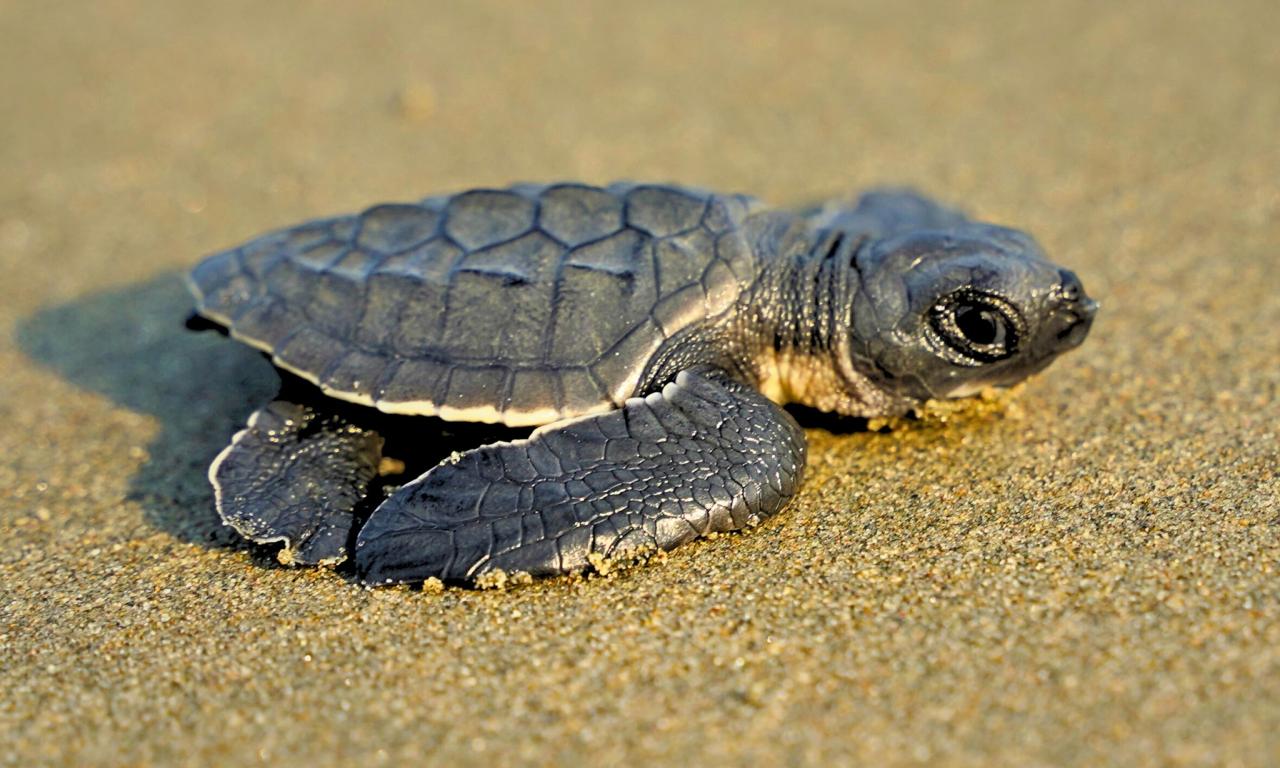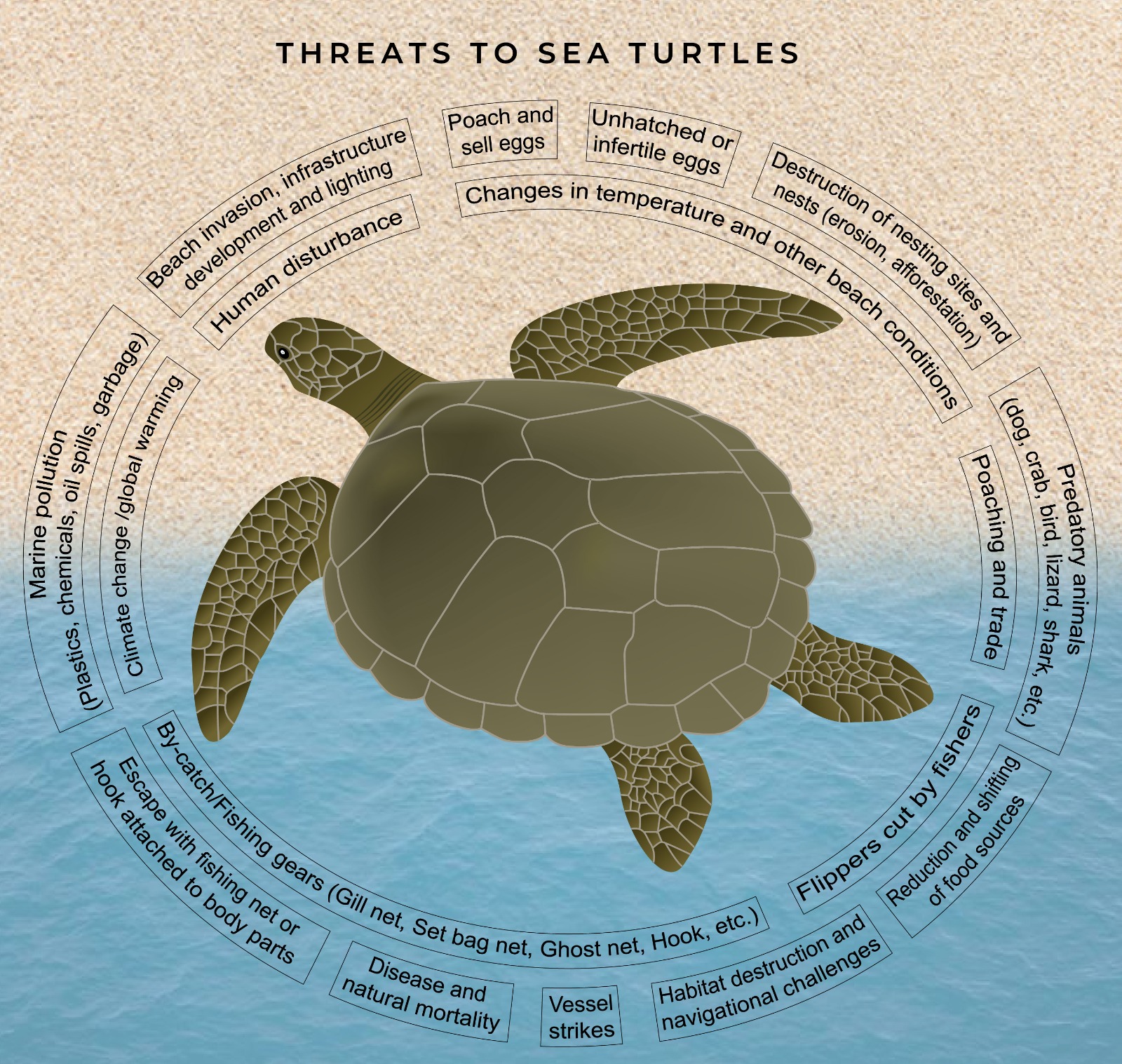
Sea turtles, a highly migratory species, are essential to maintaining marine ecological balance. A decline in their population could lead to blooms of prey such as jellyfish, which negatively affect fish production and marine biodiversity by consuming fish eggs and larvae. While estimates of global sea turtle populations are limited, scientists agree that nesting activity and population sizes are declining due to human stressors and climate change. Scientists are calling for global actions to protect sea turtles through stakeholder engagement, science-based decisions, and effective policy implementation.
Declining Sea Turtle Populations and the Challenges They Face
In Bangladesh, reports indicate an alarming 80% decline in sea turtle nesting over the past four decades, particularly in significant seabeach areas such as Cox’s Bazar-Teknaf Beach, St. Martin’s Island, Sonadia Island, and Kutubdia Island. Hundreds of sea turtles are found dead each year, particularly in the breeding season from mid-November to mid-March. In 2024, local community members reported that over 200 egg-bearing Olive Ridley turtles were found dead and washed ashore during the peak breeding time from January to February. According to residents, they observed three of the five sea turtle species nesting along the Cox’s Bazar coast. However, nesting activity has become increasingly rare, with only the Olive Ridley turtle occasionally coming to nest. Sea turtles in the Bay of Bengal face numerous challenges throughout their life cycle. Fishers often intentionally cut turtle flippers or necks to protect their fishing nets. In some cases, fishers leave turtles entangled in nets. During long-line fishing in the open sea, fishers cut the ropes, leaving hooks lodged in the turtles' mouths. Each of these actions causes injuries that eventually lead to the turtles' death.
USAID’s ECOFISH-II Activity, implemented by WorldFish Bangladesh, conducted an exploratory study in Cox’s Bazar in July 2020 when hundreds of sea turtles washed ashore. The study found that over 70% of the turtles had lost their flippers or had ulceration in the flipper joints, attributed to fishing net entanglement. The turtles were physically too weak to move and most of them died within days.

Community-Led Conservation Efforts for Sea Turtles in Bangladesh
In addition to existing sea turtle habitat conservation strategies in Bangladesh, community-led actions offer significant promise in conserving their populations in the Bay of Bengal. ECOFISH II has undertaken innovative initiatives to conserve sea turtles along the Bay of Bengal by engaging artisanal fishers as key stakeholders.
The project provided extensive education through co-management and community-driven initiatives to raise awareness about megafauna and sea turtles importance to marine ecological balance and nature conservation. ECOFISH-II Project provided training focusing on marine biodiversity conservation and responsible fishing to the fishers from 10 Landing Center-based Co-management Committees (LFCC), 429 Fisheries Conservation Groups (FCG), 1508 fishing boat skippers, 327 artisanal fishing boat owners, 50 Citizen Scientists (CS) and 140 Blue Guards (BG). They have played crucial roles by rescuing and releasing marine megafauna and threatened species, mostly sea turtles, back into the sea. They have also conducted mass awareness campaigns on marine biodiversity conservation, responsible fishing practices, marine ecosystem health improvement by addressing marine plastic and ghost gear pollution. In addition to training, fishers were incentivized under the project to rescue entangled sea turtles, handle them safely, and release them back into the sea. Since December 2020, hundreds of sea turtles have been safely released by the trained artisanal fishers.
In 2024, with the collaboration of community residents and local volunteers, ECOFISH II established an in-situ sea turtle hatchery in Kutubdia Upazila, Cox’s Bazar, successfully releasing 149 hatchlings into the sea. This initiative is a vital step toward safeguarding vulnerable sea turtle populations while empowering fishers to become active stewards of marine biodiversity. By fostering a deep sense of ownership and responsibility for ocean health, these efforts unite the livelihoods of fishing communities with the mission of conserving marine ecosystems. This harmonious connection between fishers and nature shows how local engagement can protect endangered species while promoting sustainable ocean stewardship.
